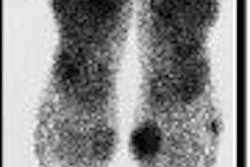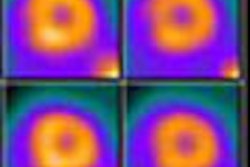
Lately there has been a strong focus on developing imaging platforms with broad applicability to various disease processes rather than narrowly targeted products. This is quite a departure from past experience with nuclear medicine, in which research was based on products with quite limited indications. Although it is true that U.S. Food and Drug Administration (FDA) approval is generally meted out in small increments for specific indications, the underpinnings or principles involved with new products have been broadened so that they can be adapted to a wider market base.
Broad imaging platforms have many benefits in that clinicians are willing to invest their time and effort to develop the skills to effectively use the products. As new indications are approved, clinicians can readily adapt their skills to the new applications. Investors are also willing to take larger risks when market opportunities are extensive.
Based on the number of new radiopharmaceutical products in the pipeline and the amount of venture capital being directed toward these developments, the future looks promising. Improvements in the FDA review process have also helped reduce the time for approval, allowing for more rapid commercialization of new products.
The number of partnerships and joint ventures has increased measurably, as nuclear medicine has moved closer to biotechnology in terms of mechanisms of targeting. As a result, it has become more important to utilize developments in other domains to build on nuclear medicine's existing strengths. In many cases, it has been possible to label selected molecules with appropriate radiotracers, benefiting from the new and innovative targeting mechanisms developed by others.
Molecular imaging platforms are being developed based on apoptosis, angiogenesis, and phospholipid ether (PLE) tumor targeting that will employ both SPECT and PET imaging. These efforts will yield new oncology products for diagnosing and monitoring cellular response to therapy. These molecular imaging platforms will also have therapeutic applications, increasing their versatility and usefulness. Therapeutic radiopharmaceuticals will also employ molecular imaging to assess biodistribution and aid in developing patient-specific dosimetry necessary for optimizing dosage and evaluating patient response to therapy.
Market overview
The U.S. market for diagnostic radiopharmaceuticals reached $1.69 billion in 2005 and is expected to rise to $3.52 billion by 2012. This forecast is based on the introduction of new products for cardiology and oncology, as well as the continued growth of PET imaging and sales of FDG. Sales of nuclear cardiology products will continue to drive the radiopharmaceutical market, with high utilization of nuclear perfusion studies coupled with advanced pharmacologic stress agents and the introduction of new products for imaging myocardial infarction and congestive heart failure. Therefore, nuclear cardiology sales of $1.21 billion in 2005 will increase to $2.11 billion by 2012.
In addition, new PET radiopharmaceuticals in the pipeline for specialized applications should add to these sales estimates. Market growth should also benefit from higher prices for many of the new products.
More biopharmaceutical products for SPECT imaging will incorporate combined molecular imaging and therapy platforms with broad applicability to many different types of cancer, expanding the range of nuclear procedures. Availability of SPECT/CT will also add an important dimension to these new agents, aiding in image interpretation. This technical influx will help all segments of nuclear medicine, expanding the platform for molecular imaging. One effect is that clinicians will have more options as alternatives to higher risk and more costly invasive procedures. This will stimulate more research and investment, adding strength and stability to newer venture companies, as well as those more established in the field.
New cardiology products
A number of new nuclear cardiology products are in late-stage development, which should help maintain momentum in this market. Two of these products have been approved in Japan and have been used effectively on a large number of patients. These products have been licensed to U.S. firms and are in phase III clinical trials, which should allow FDA approval by the end of 2007 or early 2008. Molecular Insight Pharmaceuticals of Cambridge, MA, is developing I-123 BMIPP (Zemiva) and GE Healthcare of Chalfont St. Giles, U.K., is developing I-123 MIBG (AndreView).
I-123 BMIPP is based on fatty-acid metabolism and will be utilized in cases of acute myocardial infarction, in which pharmacologic stress or exercise stress would be hazardous to the patient. The product is long-lasting and allows imaging for several days after a suspected infarction. The clinician can then develop the most effective treatment protocol based on interpretation of these images.
I-123 MIBG is a product that amplifies the andregenic receptors and neuronal pathways in the heart. Sometimes these receptors are up-regulated or down-regulated with negative effects on myocardial performance. Consequently, understanding the capabilities of these receptors provides the necessary diagnostic information for analyzing congestive heart failure.
I-123 MIBG also allows an image to be produced that supplies pertinent information. An imbalance in the androgenic receptors indicates patients at risk of congestive heart failure who would be candidates for pacemakers. This is particularly important in patients with potentially fatal heart failure.
Another version of this product, I-131 MIBG, is being developed by Molecular Insight Pharmaceuticals. However, this is in an earlier stage of development. This may provide an additional option for the physician that might be more appropriate in certain cases.
New focus in product development
For several years there was an effort to create diagnostic-therapeutic pairs of nuclear products utilizing the same targeting principle. This was prompted by the approval of Zevalin (90 ibritumomab tiuxetan), by Biogen Idec of Cambridge, MA, and Bexxar (tositumomab and iodine I-131 tositumomab), by GlaxoSmithKline of Middlesex, U.K., for treating non-Hodgkin's lymphoma.
The objective was to employ nuclear imaging to assess biodistribution prior to therapy utilizing the imaging analog of the targeted antibody or peptide. This would increase confidence in the targeting capability of the therapeutic agent and its affinity for the receptors on the targeted cells. Immunomedics and others pursued these options for a number of years. Essentially, they tried to create a stronger link between targeted imaging and therapeutic products, based on the same antibody or peptide.
Unfortunately, this approach was not economically viable because of the large investment required to develop new diagnostic products and the relatively limited market for any particular product. Whereas therapeutic products command prices in the range of $20,000 to $30,000 per dose, specialized diagnostic products are traditionally priced under $1,000. In addition, the dominance of PET and other whole-body modalities in oncologic imaging virtually neutralized opportunities for specialized SPECT agents in oncology.
Therefore, oncology products have progressed from narrowly designed receptor-based agents for specific types of tumors to broader-based platforms for imaging a wider array of cancers. In many cases, this permits the clinician to carefully monitor specific cancers and also evaluate metastatic spread in the body.
Integrin product for angiogenesis
Clinical trials have begun to measure the angiogenesis phenomenon that takes place in the remodeling of the heart following myocardial infarction. Immediately following infarct, no rebuilding of the heart occurs, so there is a negative image of the zone at risk with this agent. However, as time progresses, one can see uptake in the remodeling area. Comparatively, a thallium scan would remain negative with respect to the defect. Therefore, if an uptake in the remodeling area occurs, one can assume the generation of new vasculature.
The angiogenesis effect is also being pursued actively for monitoring breast cancer patients, as well as other cancers. The peptide employed has an affinity for the αγβ3 integrin receptors on the surface of newly formed blood vessels that supply the tumor. Therefore, this agent can assess the effectiveness of chemotherapy and aid in monitoring patients receiving treatment.
The breast cancer angiogenesis product has been adapted for both SPECT and PET imaging. The integrin PET agent measures metabolic activity more accurately than FDG because of the αγβ3 receptors on the neovasculature of rapidly growing tumors. Detecting these receptors in high concentration would indicate a fairly aggressive tumor.
PLE platform
Several companies are developing novel agents capable of functioning as both tumor selective imaging and therapeutic agents. One company, Cellectar of Madison, WI, is developing its PLE platform as functional, tumor-selective SPECT and PET molecular imaging agents. In addition to these diagnostic imaging modalities, the firm intends to aggressively develop its PLE tumor delivery platform to serve as a targeting system capable of treating various cancers.
Cellectar's lead product, NM404, has been successfully labeled with the PET imaging isotope iodine-124 (i-124) and studies have shown that NM404 can provide good tumor imaging. Comparative studies using a large array of different PLE analogues are currently under way to specify the most optimal development candidate for PET imaging. Management believes that a faster accumulation kinetic (than available from NM404) may prove advantageous for diagnostic imaging. However, this has to be proved in ongoing experiments.
I-124 is a relatively new isotope with an unusually long physical half-life of 4.2 days. This enables much easier logistical handling of the tracer than FDG. Cellectar believes that I-124-NM404 has certain advantages over FDG:
- Differentiation of malignant tumors from inflammatory sites
- Differentiation of malignant tumors from benign lesions
- Universal tumor agent with utility in brain tumors (The model compound NM404 was shown not to cross the intact blood brain barrier and therefore enables imaging of brain tumors; whereas FDG is taken up through the intact blood brain barrier and has limited use in brain tumor imaging.)
- Suitability for prostate cancer imaging (PLE compounds have almost no urinary excretion and can be effectively used for prostate cancer imaging. FDG, on the other hand, has very quick urinary elimination and is less suitable for prostate cancer imaging.)
ApoSense for imaging apoptosis
NeuroSurvival Technologies (NST) of Petach-Tikva, Israel, has developed a set of proprietary compounds with demonstrated ability to identify, bind, and accumulate within apoptotic cells in vivo. This technology addresses a large clinical need across a range of molecular imaging and therapeutic applications. Its product platform, ApoSense, is a small molecule, which the company terms an "interfacial nanoswitch," designed to target cells undergoing apoptosis.
The ApoSense technology is based on the apoptotic process, coupled with the implementation of molecular nanotechnology concepts, as follows:
An original characterization, by NST, of a set of changes in cell membrane that differentiate normal and apoptotic cells. This set of changes the company calls the "cellular fingerprints of apoptosis."
Based on this characterization, ApoSense molecules were designed as multifunctional nonpeptide molecules, capable of selectively detecting these cellular fingerprints of apoptosis. ApoSense biological activity is based on the firm's original interfacial nanoswitch concept, whereby a molecular switch is activated upon recognition of apoptotic cell membrane features, allowing the ApoSense molecule to bind to the apoptotic cell membrane and enter and accumulate within the cell.
ApoSense detects the apoptotic cell from the early stages of the death process. Its recognition of the apoptotic cell is universal, irrespective of cell type or apoptotic trigger.
ApoSense has a modular structure, allowing for versatile attachment of various imaging modalities for clinical imaging or of a drug to be targeted into apoptosis-inflicted cells and tissues. The ApoSense technology is also applicable to various molecular imaging modalities.
Imaging infection and inflammation
For many years, the development of new products to image infection and inflammation in vivo received extensive investment. This was an attempt to improve on the in vitro procedures employing indium oxine and GE Healthcare's Ceretec, Tc-99m exametazime, to label white blood cells. Several companies expended considerable effort on developing monoclonal antibodies and peptides for this purpose.
Diseases such as fever of unknown origin and inflammatory bowel disease were typical of cases difficult to diagnose, even by invasive means. Infectious diseases are also associated with inflammation, which can have numerous causes. Interest also increased in diseases of the immune system, which have a tendency for infection and inflammation. Some chemotherapy regimes, for example, result in reduced immunological resistance to infection, which puts patients at risk.
Nuclear medicine offers various methodologies for tracking infection and inflammation, but each is a compromise. Nuclear physicians have utilized gallium-67 citrate for some time; however, it is not very specific, and its imaging qualities are not optimal. In vitro labeling of white blood cells is another technique in which a sample of the patient's blood is separated, the white blood cells are labeled with a radiotracer in vitro, and they are then injected into the patient. The path of the labeled white blood cells is tracked by a gamma camera to observe sites that have an affinity for white blood cells.
This is a tedious process, which requires several repeat patient visits. It also involves risk to personnel handling potentially infected blood. Therefore, the goal has been to develop an in vivo agent capable of identifying sites of infection directly. This would not only accelerate the process of diagnosis and treatment, but would be safer for both patients and medical personnel.
DraxImage of Kirkland, Quebec, has a formulation known as Infecton that consists of ciprofloxacin labeled with technetium. Ciprofloxacin is an antibiotic that Draximage licensed from Leverkusen, Germany-based Bayer (purchased this year by Malvern, PA-based Siemens Medical Solutions) for this application. The product is in phase II development, but the company expects to complete the necessary clinical trials by the end of 2007, which may allow approval in 2008.
One advantage of the DraxImage product is that it targets infection, rather than inflammation, which management feels is an advantage. Other products have targeted white cells. Therefore, they cannot distinguish infection from inflammation. Since patient management in the case of infection would be different than inflammation, use of the DraxImage product may offer advantages.
Future prospects
Based on the number of new radiopharmaceutical products in the pipeline and the amount of venture capital being directed toward these developments, the future looks promising. Improvements in the FDA review process have also helped reduce the time for approval, allowing for more rapid commercialization of new products.
The number of partnerships and joint ventures has increased measurably, as nuclear medicine has moved closer to biotechnology in terms of mechanisms of targeting. As a result, it has become more important to utilize developments in other domains to build on nuclear medicine's existing platform. In many cases, it has been possible to label selected molecules with appropriate radiotracers, benefiting from the new and innovative targeting mechanisms developed by others.
Both researchers and their corporate sponsors have developed a more realistic approach to pursuing product opportunities that have broad diagnostic and therapeutic potential rather than focusing on narrowly defined goals based on obtaining FDA approval. The present philosophy recognizes the importance of creating products with broad market appeal that are both technically sound and economically viable to generate the revenues necessary to meet sensible investment criteria.
By Marvin Burns
AuntMinnie.com contributing writer
November 9, 2006
Burns is president of Bio-Tech Systems, a Las Vegas-based healthcare market research company founded in 1980. The firm specializes in medical imaging and radioisotope products covering a broad range of diagnostic and therapeutic applications for strategic planning, market research, and development of new business opportunities. For further details and information, Bio-Tech Systems can be reached at 702-456-7608 or via its Web site, www.biotechsystems.com/.
Bibliography
Bio-Tech Report 250-Diagnostic Radiopharmaceuticals Market.doc
Bio-Tech Report 240-Market for PET Radiopharmaceuticals and PET Imaging
Bio-Tech Report 230-World Market for Therapeutic Radiopharmaceuticals
Bio-Tech Report 210-U.S. Market for Diagnostic Radiopharmaceuticals
Related Reading
Radiopharma market expected to double by 2012, October 10, 2006
New promise for diagnostic radiopharmaceuticals, June 2, 2006
Therapeutic radiopharmaceutical market poised for takeoff, February 21, 2006
FDA issues draft CGMP for PET radiopharmaceuticals, September 26, 2005
Radiopharmaceuticals market to reach $3.2 billion by 2010, June 29, 2005
Copyright © 2006 Bio-Tech Systems



















